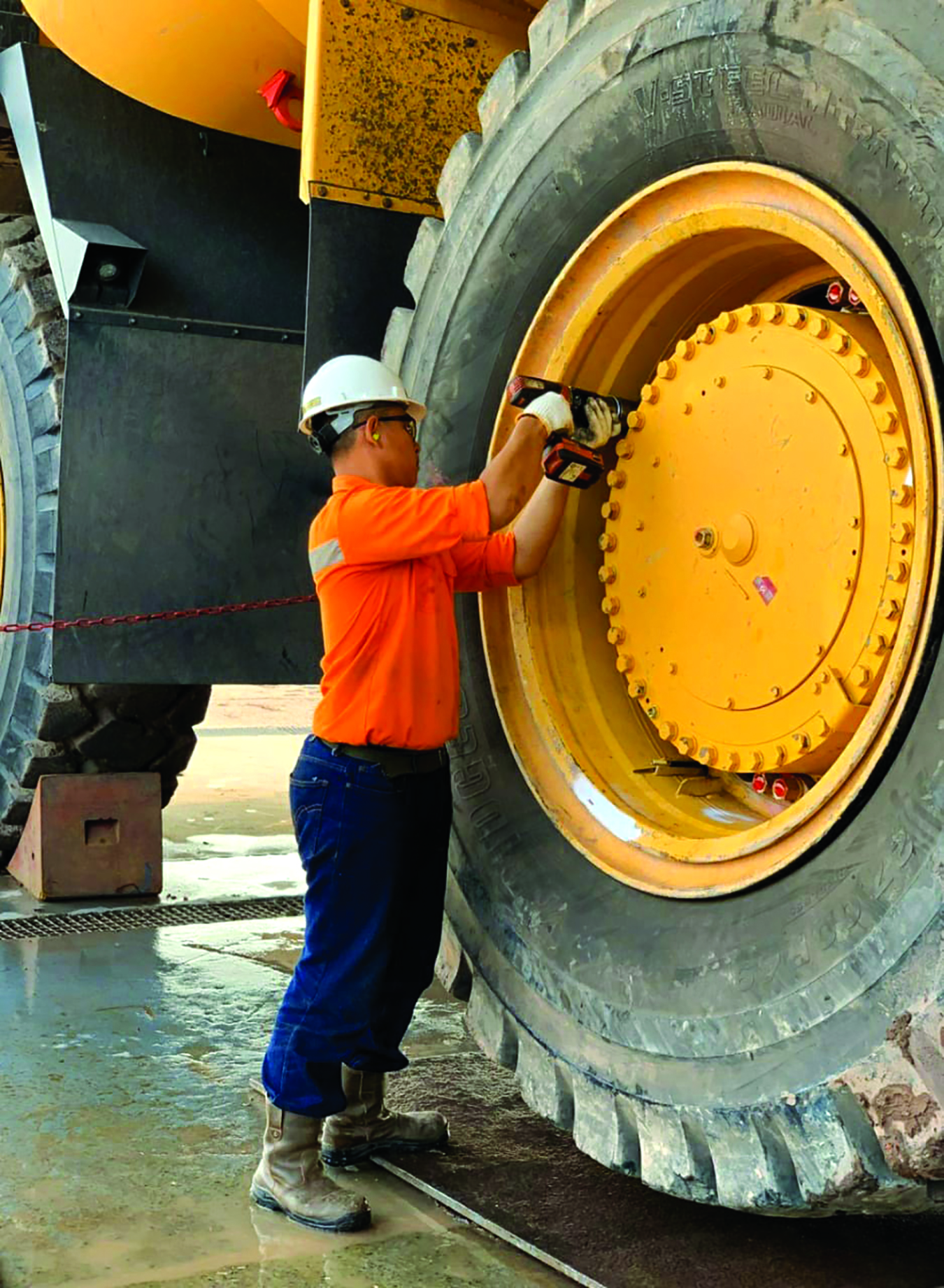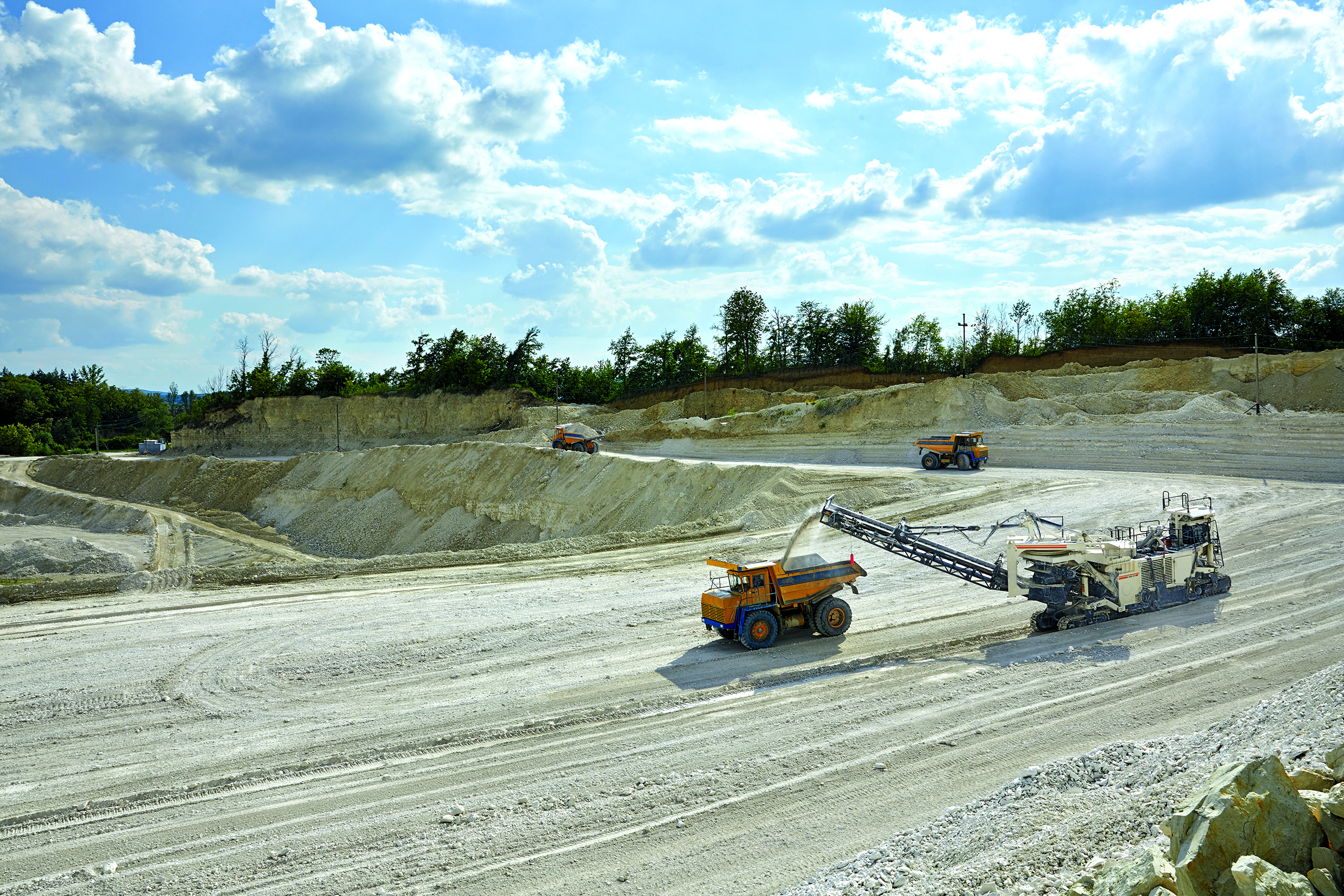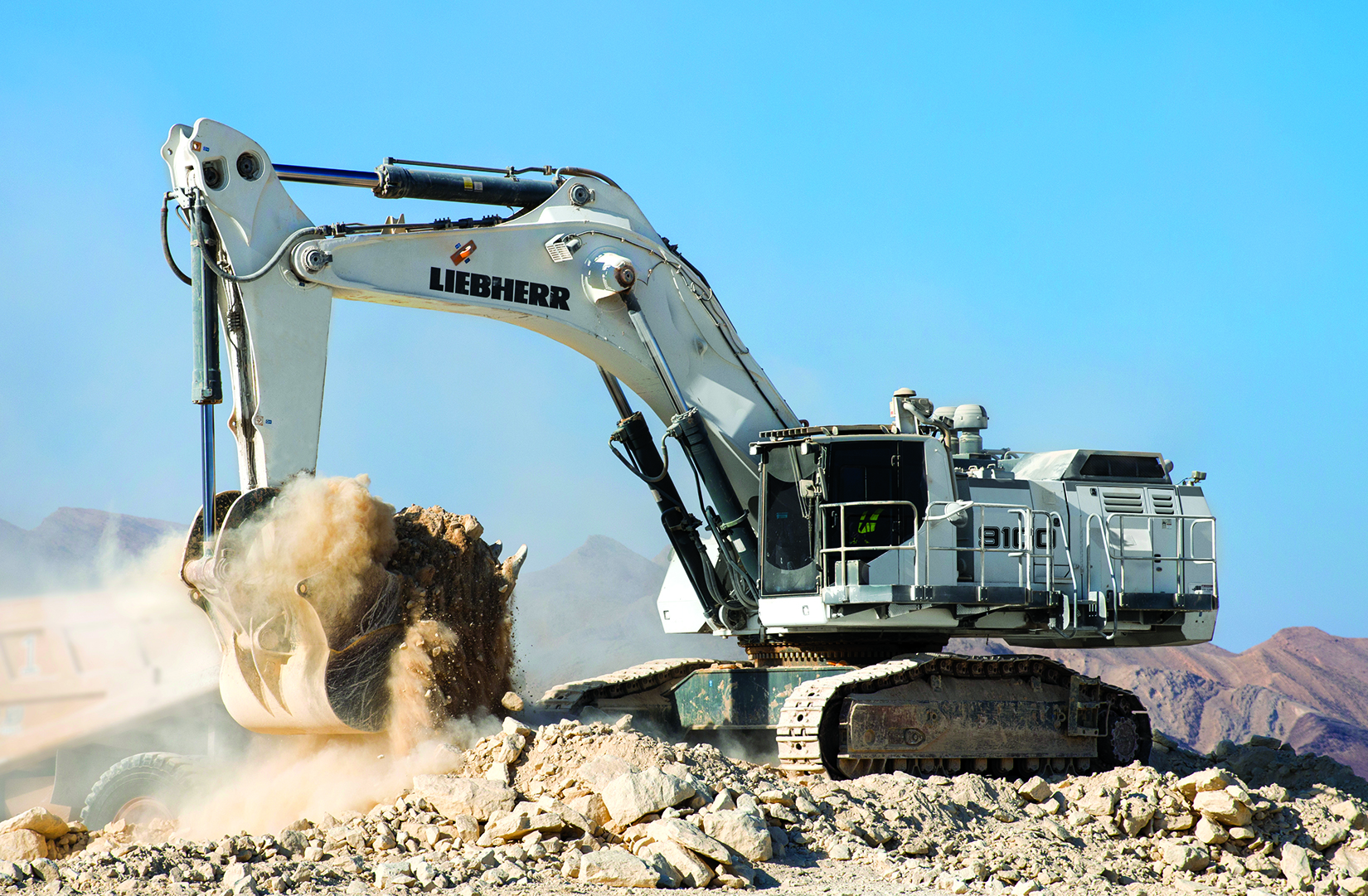Digital technologies offer opportunities for optimization
Across the mining industry, two trends are clear at present: first, the renewed focus on greener, more sustainable mining operations and, second, the drive for optimization enabled by the application of digital technologies; both are areas in which German vendors excel.
RWE Trains Mines to Cut Emissions
Effective emission control for large material handling and conveyor systems is becoming increasingly important worldwide. As one of the leading mining companies in Europe, RWE has more than 120 years of expertise in developing emissions reduction strategies.
RWE Technology International (RWE TI) shares this best practice through international consulting engagements.
“RWE TI is supporting industrial clients worldwide, evaluating, planning and implementing emission control measures for continuous haulage system,” said Arie-Johann Heiertz, head of mining and materials handling for RWE TI. “We target air pollutants such as particulate matter (PM), sulphur oxides (SOx) and oxides of nitrogen (NOx), but also GHGs, primarily carbon dioxide (CO2).
“The key to reducing air emissions is to provide a systematic approach to the assessment of air pollutants. A first step is to identify dust emission sources, usually covered during a site visit. Practical experience has shown us that it’s more efficient to eliminate the dust source instead of capturing the dust in a larger space.
“Without an emission inventory, it is difficult to determine where to best focus resources to reduce emissions. Subsequently emission inventories are used to identify emissions reduction opportunities and to help quantify the benefits of those strategies. This is done in customized engineering workshops with clients, where the results of data analysis and effective measures are discussed.”
Such measures can be grouped into following categories:
• Equipment: measures related to physical changes or emission reduction technologies;
• Operational: measures related to operational efficiency improvements; and
• Energy: measures related to energy sources used by equipment.
Often, RWE TI encounters the challenge of deciding whether to replace or retrofit equipment.
Heiertz explained: “Both strategies are proven to have positive emissions benefits. However, careful evaluation and analysis is a must and selection is dependent on site specific factors that need to be evaluated on a case-by-case basis. If equipment retrofit is chosen, some retrofit technologies might have a negative impact on fuel consumption. In case of replacements, the cost of replacement earlier than the intended useful life of the equipment may present the biggest challenge for a good business case.
“In an iterative engineering process, materials handling facilities are optimized. Only if cost-effectiveness is proven we proceed to further evaluate and implement specific measures.”
This approach ensures both the effectiveness of individual measures and full operability of large-scale mine operations. To nurture awareness and skills for managing emissions, RWE TI supports customers with specific operator training and guidance on standard operating procedures.
Plarad Brings Wearable Technology to Maintenance Operations
Plarad, part of Maschinenfabrik Wagner, has provided torque and tensioning systems to industrial operations across the globe for more than 50 years. Offering eight different product lines from manual torque multipliers to fully automatic bolting systems, the group brings together development, construction, assembly, maintenance, repair and calibration as well as training, analysis and consulting under one roof.
“As well as primary mining machines such as drill rigs, haulage trucks and mills, other equipment also plays an important role in modern mining and tunnel construction in every part of the world, especially in the area of repair and maintenance,” said Marius Wilhelm, head of export sales at Plarad.
Despite considerable effort in many countries to improve safety, mining is still a hazardous occupation. Wilhelm said that to maintain mine vehicles correctly and protect workers from injury, the correct tools are vital.
“The trend today is towards small yet powerful devices that are handy and minimize the physical strain on the worker,” he explained. “At the same time effectiveness is increased and downtime reduced significantly.”
Whereas a complete hydraulic unit weighing 40-50 kg was once the industry standard, the same work can now be done using a 6-kg light nutrunner, Plarad’s most popular tool. The Plarad DA2 battery nutrunner enables quick and easy loosening and tightening of large, usually dirty and weathered bolts by one operator.
“Unrestricted flexibility, high power output and a powerful battery pack enable the best working conditions and smooth processes,” Wilhelm said. “High torque values up to 8,000 Nm with overhead bolting connections, or bolts in hard-to-reach places can be achieved easily.”
To ensure its products are being used safely and effectively, Plarad service centers, local partners and representatives across the world offer demonstrations and training courses for clients.
“Our focus is not only on the operator’s safety but also on the correct torque applied in the bolted joint. A complete record with the Plarad smart documentation solution completes the security concept and guarantees workers full control and traceability,” Wilhelm said.
To help meets the growing need for documentation and transparency at today’s digitized operations, Plarad’s new battery nutrunner DA2docu can record and store information relating to 6,000 bolted joints, transferring the data automatically via a wireless connection to a PC.
Mathias Welle, product manager at Plarad, explained: “After successfully introducing the bolting data documentation function for the DA2 battery nutrunner, the electric nutrunners of our DE1-series have now also been equipped with this innovative function. With the aid of the documentation, function bolting can now be recorded and stored wirelessly via WLAN on a terminal device. Additional software or hardware to read out is not required.”
Plarad said it is also working on a trend-setting study. Using smart glasses, bolting data will be made visible to the user during the work process. This allows faulty bolted joints to be displayed via an optical warning signal in the “head-up” display of the glasses so that technicians can correct them immediately on site.
“Our devices are available with battery, electric or pneumatic drives. Thanks to the unique Plarad gear, technology torques of up to 12,000 Nm can be easily applied with one device. It is always good to see how the Plarad torque and tension systems make the daily operation easier for the operators in the mines,” added Wilhelm.

To maintain mine vehicles correctly and protect workers from injury, the correct tools are vital. Inset: Plarad’s most popular tool, the DA2 battery nutrunner. (Photos: Plarad)
Wirtgen Surface Miners Eliminate Blasting From Ukrainian Mine
Wirtgen surface miners are playing a key role in increasing production and reducing costs at a limestone operation belonging to PJSC Ivano-Frankivskcement in the Ukraine.
For years, the material was extracted by drilling and blasting and then wet-processed into clinker in the cement plant. But the dry process significantly reduces fuel consumption per ton of material. The use of explosives in blasting was also having a detrimental effect on neighboring residential areas due to the noise generated and ground vibrations, so a new mining method was necessary.
IFCEM found the solution in Wirtgen surface miner technology: in 2012, the company purchased a 2200 SM, in 2015 a second, identical model and in 2017 a 2500 SM.
By gradually phasing out drilling and blasting operations, the surface miners progressively reduced the time and cost involved in pre-crushing and post-crushing the material, and also made it possible to redesign the mining area. By ensuring a defined slope of the surface with the aid of the Level Pro automatic leveling system, the surface miners created the conditions for efficient dewatering of the deposit.
This new production method allows much drier raw material to be mined and, thanks to the redesign of the mining area, production has also been increased. Now, even previously blocked edge surfaces can be worked and additional material extracted.
Wirtgen said the increased production was a deciding factor in the purchase of the third machine. Having seen the results produced by the smallest surface miner, the 2200 SM with a 2.2-m cutting drum and a cutting depth of up to 300 mm, the management team at IFCEM were keen to opt for the more powerful model, the 2500 SM.
Together, the three Wirtgen surface miners now produce around 7,000 tons per day. The 2500 SM, which has already clocked more than 4,500 hours a year, is equipped with a 2.5-m-wide cutting drum fitted with cutting tools on an HT 15 quick-change tool-holder system. Wirtgen said the HT 15 reduces the time required to replace the tool-holder from 90 to 15 minutes compared to conventional welded tool holder systems.
Since its market launch, the 2500 SM has proven its performance and flexibility at mining operations worldwide. It can be used for the selective mining of raw materials with a uniaxial compressive strength up to 80 MPa and in special cases even higher. The surface miner cuts, crushes and loads the rock in a single operation. Depending on the application, the material can either be loaded directly into trucks via the 11.3-m-long slewing discharge conveyor of the miner, deposited laterally or as a windrow between the machine’s crawler tracks.
The 2500 SM is powered by a 783-kW (1,065-hp) engine and precision is guaranteed by the Level Pro leveling system integrated into the machine’s control system.
The operator sits in a sound- and dustproof, air-conditioned cabin. A video system with several cameras gives the operator a complete overview during the extraction process, ensuring maximum safety.
 Machine operator, Svyatoslav Podolyak, summed up the advantages: “This surface miner has an excellent production rate, which is even higher than that of the 2200 SM. And that was already very good. Thanks to the clearly arranged instruments, I have all important information at a glance. The soundproofed and air-conditioned cabin also gives me an optimal view of the cutting edge and allows me to concentrate on my work in the cold winters and hot summers typical of this region.”
Machine operator, Svyatoslav Podolyak, summed up the advantages: “This surface miner has an excellent production rate, which is even higher than that of the 2200 SM. And that was already very good. Thanks to the clearly arranged instruments, I have all important information at a glance. The soundproofed and air-conditioned cabin also gives me an optimal view of the cutting edge and allows me to concentrate on my work in the cold winters and hot summers typical of this region.”

The 2500 SM from Wirtgen mining limestone in Ukraine. Inset: A satisfied customer! A view inside the 2500 SM cab. (Photos: Wirtgen)
Liebherr Drives Sustainability With Electric Solutions
Despite a reduction in global mining equipment sales in 2019 compared to 2018, the past 12 months have still been positive for Liebherr’s mining division; the company increased its mining excavator market share and has upped the number of PR 776 dozers that it has sold into the market.
“We were also able to sell more truck fleets in the Americas, Asia and Oceania,” said Dr. Jörg Lukowski, vice president at
Liebherr Mining. “Liebherr concluded large frame contracts with top players in the industry in Asia and Australia. Our global after sales business and remanufacturing activities are also growing. We have started overhauling engines in South Africa and have now commenced activity in Panama.”
The Australian mining market continues to be a strong source of demand for Liebherr’s equipment, but Lukowski said the company is also seeing growth in other markets, including Chile, Peru, Panama and the U.S.
“A very specific market was Pakistan where we delivered a large fleet of 100-tonne mining excavators last year,” he explained.
Electric drive systems were a key focus for Liebherr at the bauma tradeshow in 2019 and this trend will continue to drive the company’s R&D activities throughout 2020.
“As presented at bauma, we plan to make all our of hydraulic excavators except for the R 9100 available with electric drive. This has not changed and will also be realized for new products that we will develop,” said Lukowski. “A new development that we were able to move forward is the trolley system for the T 236 haul truck. A development contract has been signed with VA Erzberg for a fleet of T 236 trucks with a complete new trolley system. This system allows a small radius on corners and is therefore a milestone in the development of trolley systems.
“Erzberg would be able to electrify the main haul road of its Erzberg mine site in Austria and operate a fleet of T 236 trucks from 2021. This electrification project will increase Erzberg’s life of mine significantly and reduce CO2 emission on site.”

Electric drive solutions remain a key focus for Liebherr. The company is working to create electric drive versions of all its hydraulic excavators bar the R 9100. (Photo: Liebherr)
Not content with just boosting the sustainability of its customer’s operations, Liebherr is also focusing on excellence its own manufacturing processes and business practices.
“Liebherr follows the principles of sustainability in design and manufacturing,” said Lukowski. “This means that we apply the highest environmental standards in our manufacturing and all our facilities around the world. Energy consumption, emissions control and waste management are key areas of concern for us.
“Liebherr has engineered products that comply with the highest standards. The machines we build, include smart power management that ensures that the machine consumes the minimum required power, and that any loss of energy is reduced to the lowest possible level. Tests have confirmed that Liebherr machines are highly fuel efficient compared to other products on the market. The emissions do comply or exceed the international standards.
“The machines are also designed for extended service intervals, as well as increasing component life plus a high percentage of materials are recyclable. All of this together allows the best use of resources and a reduction in waste.”
Like many vendors, Liebherr is also looking forward to the MINExpo exhibition in Las Vegas this September. Preparations are underway to unveil several innovations including a new shovel, and more detail will be provided on its trolley assist solution and Liebherr engines.
“Autonomy, automation, new technologies in maintenance and in-field service support are key areas… but we cannot reveal too many details,” Lukowski said. “If you wish to know more then MINExpo is the right place and time to come and visit us.”

A PC 8000 hydraulic excavator on the move at Drummond with a little help from the Goldhofer team. (Photo: Goldhofer)
Goldhofer Helps With Heavy Haulage at Drummond
In 2018, the Goldhofer team helped Colombian transport specialist, Transportes Montejo, to move an 800-tonne PC 8000 hy-
draulic excavator over 25 km of difficult terrain at the Drummond mine site in La Loma, Colombia.
Thanks to the excavator’s size, an extra-strong ramp was required to load the machine onto a double-width 16-axle self-propelled combination of THP/SL modular transporters from Goldhofer which then carried the excavator to its new operating location without a hitch. The extremely robust THP/SL modules with their low deadweight have a high bending moment and are good for handling heavy and concentrated loads, e.g. when used with a low bed.
The team also moved a 1,200-tonne P&H 2800 XPC shovel quickly and easily using a PST/SL combination with two 360 kW powerpacks and three Kenworth 6×6 tractors.
Fernando Montejo, CEO of Transportes Montejo, said: “We finally decided on a triple-axle combination comprising 16 Goldhofer PST/SL-E and THP/SL axle lines. Planning the operation alone took five days, with another four days required to handle the operation itself.”
The 32-km route included two mountains, each with up to 5% gradients, plus the 30-m-long Doña Raque bridge.







